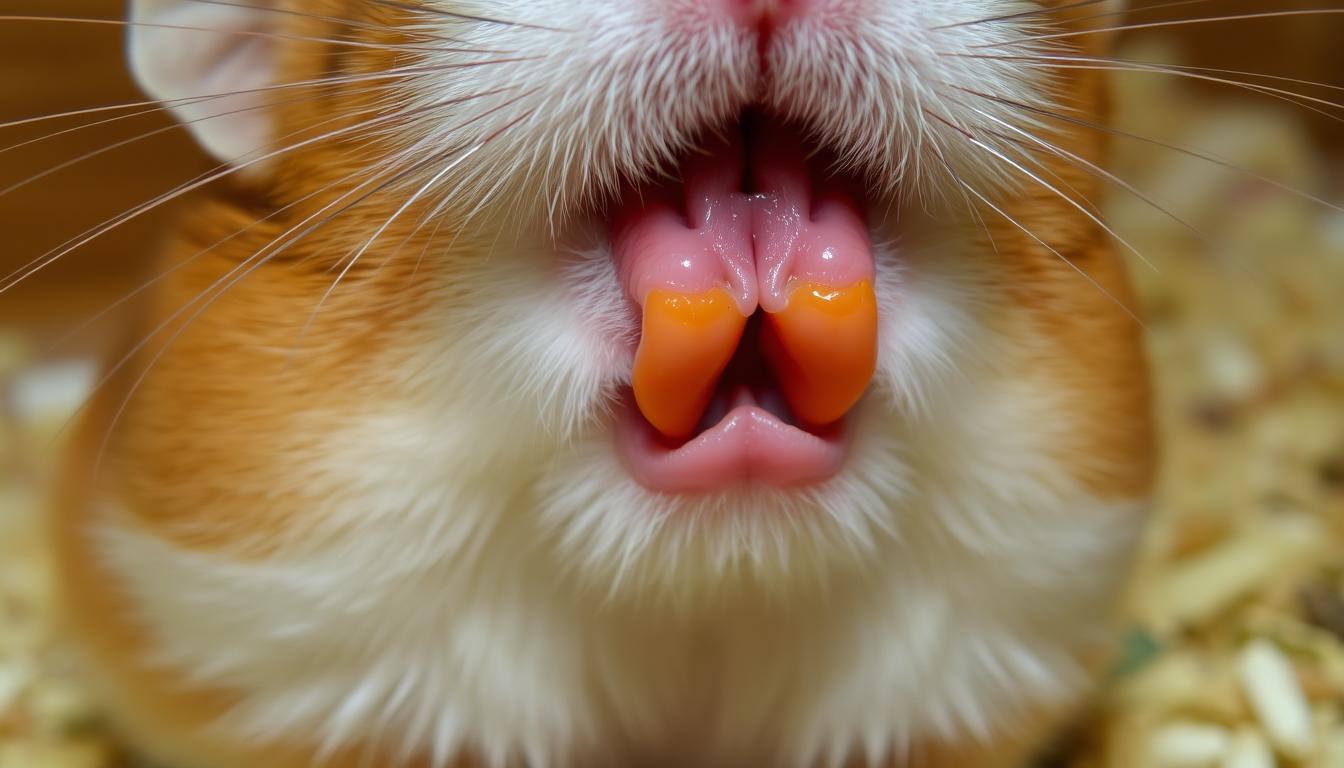Hamsters, those adorable pocket-sized pets, bring joy and entertainment to countless homes. We meticulously plan their diets, ensure their cages are clean, and shower them with attention. But have you ever stopped to consider their dental health? The question of whether or not to brush a hamster’s teeth might seem absurd at first, but it’s a topic worth exploring to ensure the overall well-being of your furry friend. After all, a happy hamster is a healthy hamster, and dental hygiene plays a crucial role in that equation. So, grab a cup of tea, settle in, and let’s delve into the world of hamster dental care!
Hamster Teeth: Do They Really Need a Brushy-Brush?
Hamsters, unlike humans, possess continuously growing incisors. This means their front teeth are constantly erupting, requiring them to gnaw on various objects to keep them worn down and at a manageable length. This natural process is essential for their ability to eat and maintain a healthy bite. Without proper wear, these teeth can become overgrown, leading to serious health complications.
The need for actual brushing is a complex question. In the wild, hamsters rely on their natural diet and environment to keep their teeth in check. However, domesticated hamsters often have access to softer foods and less stimulating environments, which can disrupt this natural process. This is where the question of supplemental dental care arises.
While the idea of wielding a tiny toothbrush on a squirming hamster might seem daunting, the reality is that direct brushing isn’t always necessary. The primary goal is to ensure their teeth are being worn down adequately. This can often be achieved through providing appropriate chewing materials and a balanced diet.
However, in certain situations, such as when a hamster has a malocclusion (misaligned teeth) or is prone to dental issues, brushing might be considered as a supplementary measure. It’s crucial to consult with a veterinarian experienced in small animal care to determine if brushing is truly necessary for your individual hamster.
Ultimately, the decision of whether or not to brush your hamster’s teeth depends on a variety of factors, including their individual dental health, diet, and environment. It’s a topic that requires careful consideration and potentially professional guidance to ensure you’re providing the best possible care for your furry companion.
Think of it this way: you’re not necessarily aiming for pearly whites in the human sense, but rather ensuring the teeth are functioning properly and not causing any discomfort or health problems for your hamster. The focus is on maintaining a healthy bite and preventing overgrowth.
Tiny Chompers, Big Question: Brushing Hamster Teeth?
The sheer size of a hamster makes the prospect of brushing their teeth seem almost comical. Imagine trying to maneuver a toothbrush inside such a small mouth! It’s a delicate operation that requires patience, precision, and a healthy dose of understanding about hamster anatomy.
But the question remains: is it actually necessary? While the image of a hamster sporting a sparkling smile is appealing, the reality is that their dental needs are different from ours. They don’t develop cavities in the same way humans do, and their teeth are designed for constant gnawing rather than meticulous brushing.
The primary concern for hamster teeth is overgrowth. Their incisors, as mentioned earlier, grow continuously throughout their lives. If they don’t have adequate opportunities to wear them down, they can become excessively long and cause a range of problems, from difficulty eating to painful mouth sores.
Therefore, the focus should be on providing them with the right tools to maintain their dental health naturally. This includes offering a variety of chew toys, such as wooden blocks, cardboard tubes, and commercially available hamster chews. These items help to wear down their teeth and keep them at a healthy length.
Brushing, if considered at all, should be reserved for specific cases where there’s a clear indication of a problem, such as food buildup or a tendency for plaque accumulation. It’s not a routine practice for most hamster owners, and it should always be approached with caution and under the guidance of a veterinarian.
So, while the idea of brushing your hamster’s teeth might seem like a quirky and perhaps unnecessary endeavor, the underlying concern for their dental health is very real. The key is to understand their specific needs and provide them with the appropriate resources to maintain a healthy and functional bite.
The Truth About Hamster Dental Hygiene & Why it Matters
Hamster dental hygiene is more about prevention than cure. Unlike humans, hamsters are less prone to developing cavities. Their primary dental issues stem from the continuous growth of their incisors and the potential for malocclusion, which is when the teeth don’t align properly.
Neglecting a hamster’s dental health can lead to a cascade of problems. Overgrown teeth can make it difficult, if not impossible, for them to eat properly. This can result in weight loss, malnutrition, and a weakened immune system, making them more susceptible to illness.
Furthermore, overgrown teeth can cause painful sores and abscesses in the mouth. These infections can be very serious and require veterinary intervention, often involving tooth trimming or even extraction. The discomfort can also affect their behavior, making them irritable and less active.
Malocclusion can also contribute to dental problems. If the teeth don’t meet correctly, they won’t wear down evenly, leading to uneven growth and potential injury to the gums and cheeks. In some cases, malocclusion is genetic, but it can also be caused by injury or improper diet.
Therefore, maintaining good dental hygiene is crucial for a hamster’s overall well-being. It’s not just about aesthetics; it’s about ensuring they can eat comfortably, maintain a healthy weight, and avoid painful infections.
The truth about hamster dental hygiene is that it’s largely about providing the right environment and resources for them to maintain their teeth naturally. A balanced diet, plenty of chew toys, and regular dental checkups with a veterinarian are the cornerstones of good dental care for your furry friend.
Hamster Tooth Troubles: What Can Go Wrong in Their Mouths?
A hamster’s mouth, though small, is susceptible to a variety of dental problems. The most common issue is overgrown teeth, particularly the incisors. As these teeth grow continuously, they need to be worn down through constant gnawing. If this doesn’t happen, they can become excessively long, curving back into the mouth and causing injury to the gums and cheeks.
Malocclusion, or misaligned teeth, is another significant concern. This can be a genetic issue or caused by injury. When the teeth don’t meet properly, they can’t wear down evenly, leading to uneven growth and potential damage to the soft tissues of the mouth.
Abscesses can also develop in the mouth, often as a result of injury from overgrown or misaligned teeth. These infections can be very painful and require veterinary treatment, including antibiotics and drainage of the abscess.
In rare cases, hamsters can develop tumors in their mouths. These growths can interfere with eating and cause discomfort. Diagnosis and treatment typically require a veterinary examination and potentially a biopsy.
Dental disease, though less common than in other animals, can still occur. This can involve inflammation of the gums and surrounding tissues, leading to pain and difficulty eating. Poor diet and lack of proper chewing materials can contribute to dental disease.
Finally, injuries to the mouth, such as cuts or punctures, can occur from sharp objects in the cage or from fighting with other hamsters. These injuries can become infected and require veterinary attention. Therefore, it’s important to keep the cage clean and free of hazards.
Signs Your Hamster Might Need Some Serious Tooth TLC
Recognizing the signs of dental problems in hamsters is crucial for early intervention and preventing serious complications. One of the most obvious signs is difficulty eating. You might notice your hamster dropping food, chewing slowly and deliberately, or avoiding hard foods altogether.
Weight loss is another telltale sign. If your hamster is unable to eat properly due to dental pain or overgrown teeth, they will likely lose weight. Monitor their weight regularly and consult a veterinarian if you notice a significant drop.
Drooling or excessive salivation can also indicate a dental problem. This is often a sign of discomfort or pain in the mouth, potentially caused by overgrown teeth or an abscess.
Changes in behavior can also be indicative of dental issues. Your hamster might become irritable, less active, or reluctant to be handled. They might also paw at their face or rub their mouth against objects in the cage.
Visible signs of overgrown teeth are also a clear indication of a problem. If you can see that your hamster’s incisors are excessively long, curving, or misaligned, it’s time to seek veterinary attention.
Finally, any signs of swelling, redness, or discharge around the mouth should be taken seriously. These could indicate an abscess or infection, which requires prompt veterinary treatment. Remember, early detection and treatment are key to ensuring your hamster’s dental health and overall well-being.
Brushing Basics: What You’ll Need for Hamster Tooth Care
While brushing isn’t always necessary, if your veterinarian recommends it, you’ll need to gather the right supplies. First and foremost, you’ll need a soft-bristled toothbrush. A child’s toothbrush or even a cotton swab can work well for this purpose. The key is to choose something small and gentle that won’t irritate your hamster’s delicate gums.
Next, you’ll need a hamster-safe toothpaste. Human toothpaste is not suitable for hamsters, as it contains ingredients that can be toxic if swallowed. Look for a toothpaste specifically formulated for small animals, or ask your veterinarian for recommendations. In some cases, plain water or a diluted saline solution may be sufficient.
You’ll also need a clean towel or cloth to gently restrain your hamster during the

